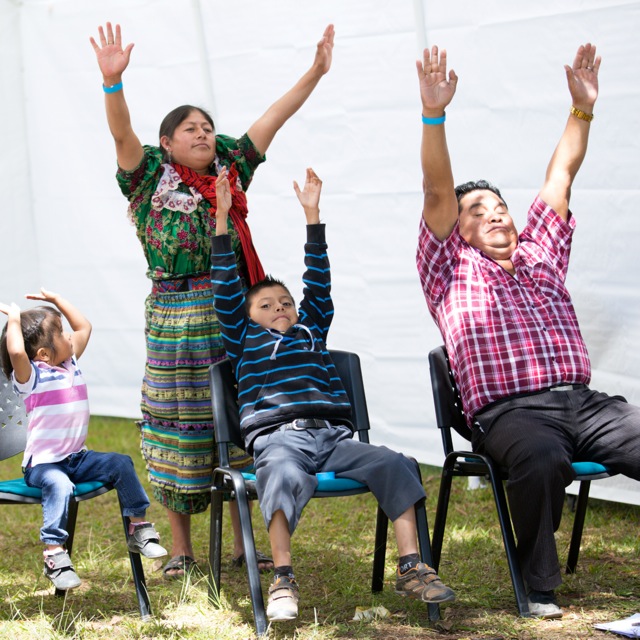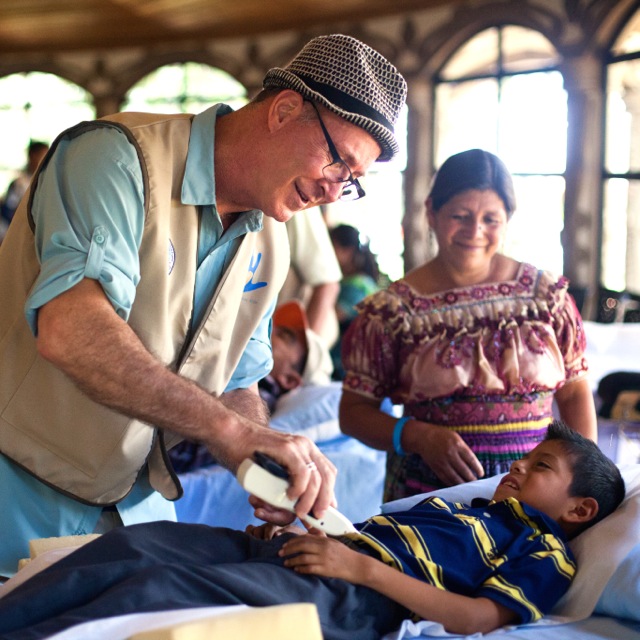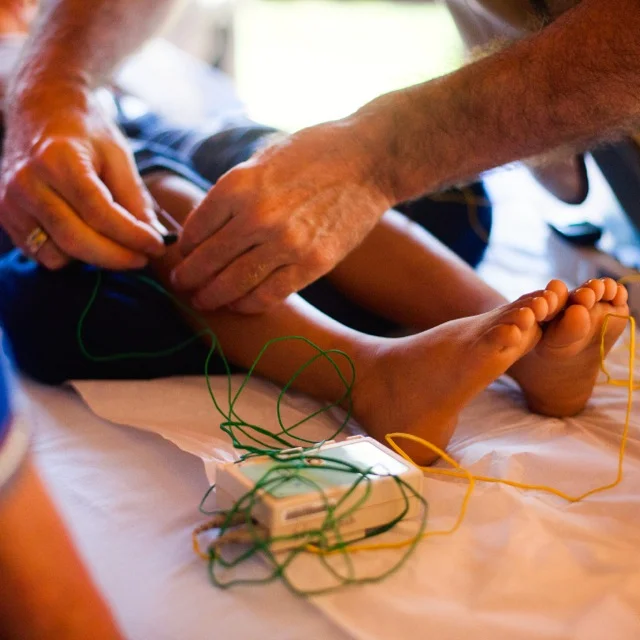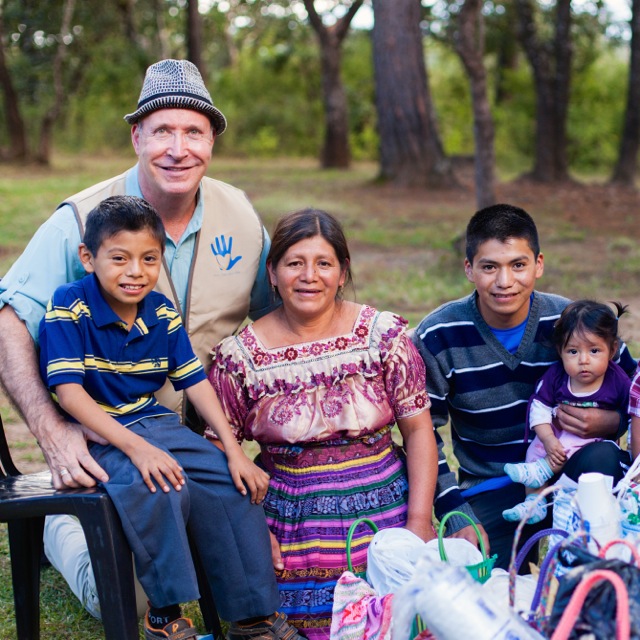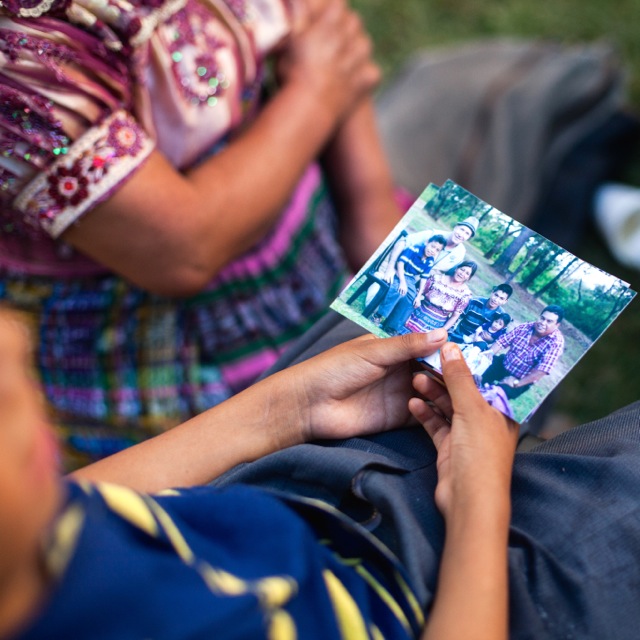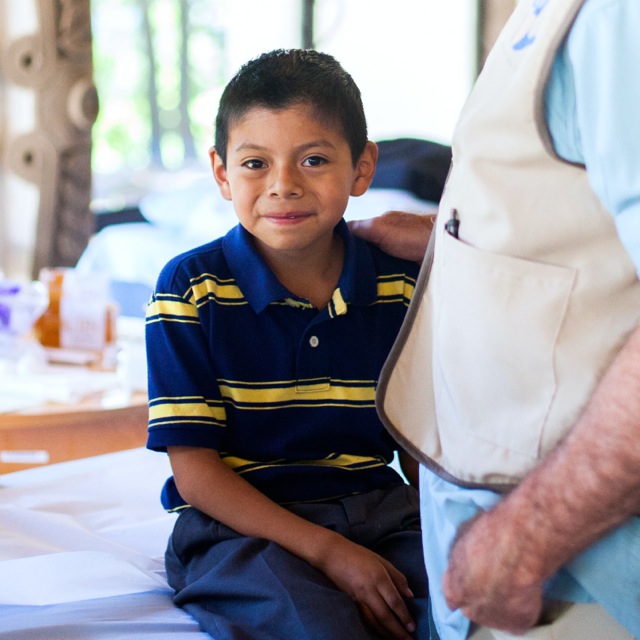Brian and Abner Juan are two of our favorite young visitors to Global Healthworks Foundation outreach clinics in Quiché, Guatemala. Both were originally experiencing limb pain that interfered with their schoolwork and playtime activities. One of GHF’s key treatment strategies for children is to teach their parents simple exercises and healing techniques (e.g., massage and moxibustion heat therapy) so that they can continue treating their children at home. The narrative below describes how Brian and Abner Juan benefited from this effective approach.
Two Boys, One Foundation: GHF Increases Mobility of Brian and Abner Juan
Brian sits quietly next to his father, playing with a blue paper band around his wrist. “Empezamos con un gato y una vaca (Let’s begin with cat-cow),” Ángel Solís the yoga instructor says. About twenty Quiché residents seated in a circle begin to expand and contract their torsos. “Mooooooooo!” Ángel yells as the group looks upward. Eight-year-old Brian giggles uncontrollably and begins to move along with those seated around him. “Mooooooooo!” he shouts in between laughs. He jumps up and down excitedly, waving his arms in the air—something he was unable to do without pain just a short time ago.
Clad in a worn Spiderman sweatshirt, a boy not much younger than Brian walks up the path to the primary jornada (medical mission) space. “¡Aquí tenemos Spiderman! (Here we have Spiderman!)” shouts Peter Caron, mobile clinic manager and acupuncturist. His mother looks confused as Peter points to the sweatshirt. “¡Abner Juan, eres un superhéroe! (Abner Juan, you’re a superhero!)” The three smile as Peter begins his intake. “Desde la última jornada, no se ha quejado de nada (Since the last jornada, he hasn’t complained about anything),” his mother explains. “Sus piernas están más fuertes y no le duele la espalda como antes. (His legs are stronger and his back doesn’t hurt like before.)” “¿Ves? (You see?)” Peter says to the young boy. “¡Tú eres un superheróe! ¡Eres un verdadero Spiderman! (You are a superhero! You are a real Spiderman!)”
Frequent visitors to Global Healthworks Foundation’s (GHF’s) jornadas, both Brian and Abner Juan have suffered from limited mobility since an early age. The visit to this year’s October jornada is Brian’s sixth and Abner Juan’s fourth time being seen by “Doctor Peter” and “Doctor Dan,” Dan Wunderlich, Foundation Founder and Executive Director. During their first treatments, the boys’ parents expressed deep concern, as their children were experiencing tremendous pain just from walking. Brian also had trouble moving his fingers, which made schoolwork incredibly difficult. “No aguantó caminar o escribir (He couldn’t handle walking or writing),” Brian’s father says. “Pero ahora (But now),” Brian jumps in, “me siento siempre mejor (I am feeling better all the time). Ahora puedo jugar con mis amigos. (Now I can play with my friends.)”
“I am feeling better all the time. Now I can play with my friends.”
Though neither is over ten years old, both boys—no relation—are surprisingly eloquent and seem to understand the significance of the Foundation’s work. As Doctor Dan approaches, their eyes light up and their smiles grow even brighter. After just a few minutes watching Dan’s interaction with the boys and their families, it is obvious why.
Along with his sister Terése Wunderlich, Dan attends to the boys and their families with his full attention and a profound compassion. His treatment is anything but clinical; it’s personal, educational, and emotional. As he treats Abner Juan, he explains each step of the process to his mother, Violeta, and aunt, Magdalena, a health promoter with the Foundation. Both women have continued to provide Abner Juan with bodywork and moxa, or dried mugwort, treatments since the boy’s previous visit. “Tú eres la doctora (You are the doctor),” Dan tells Violeta. “Y tú, Abner Juan, eres muy valiente. (And you, Abner Juan, are very brave).” After acupuncture, the Wunderlich team realigns Abner Juan’s hips and spine, gives his mother another pack of moxa, and sends Abner Juan outside to play with his older sister Lesli. “Buenos resultados (Good results),” Lesli says of her brother’s treatment. A bit more expressive, Abner Juan says, “Me ponen las agujas y después no me duelen mucho los pies. (They put the needles in me and after, my feet don’t hurt much.)”
Brian’s progress has been similarly effective and, as evident from just one conversation with his mother, impacted the entire family deeply. “Nos han ayudado bastante (They have helped us so much),” his mother, Benita, says, crying. “Nada ayudaba antes. La medicina química no ayudó. Pero ahora él es diferente. Ahora no se preocupe. Ha cambiado. Le gusta estudiar. Juega pelota. Está más feliz. (Nothing helped before. Chemical medicine didn’t help. But now he is different. Now he doesn’t worry. He has changed. He likes to study. He plays ball. He’s happier.)”
Terése, whom the team calls upon when treating children and special cases, notes a significant improvement in both boys since the first time they were seen. “There were immediate results,” she says. “It’s great to see how all the treatments we do here are effective.” And they’re simple. “The moxa and manual therapy techniques are easy-to-do and they can really make a big difference,” she adds, as evident in the ability of both mothers to continue treating their sons at home.
Grateful for the boys’ healing and progress, both families try to put into words their appreciation for the GHF team. Brian’s family gives Doctor Dan a bag of apples as a token of their appreciation. “Son buenos doctores (They are good doctors),” his mother says. “Gracias. Muchas gracias. (Thank you. Thank you very much.)” “La Fundación cura mucho (The foundation cures a lot),” Magdalena, Abner Juan’s aunt explains simply. “Es algo muy bueno. (It’s something very good.)”
For Dan, cases like these are what make it all worthwhile. “This is why we do this,” he says. “What better joy is there than to provide the opportunity for two young children to be normal again? Though they originate from two different communities, the boys’ results and experiences are strikingly similar: less pain, the ability to walk and play, and a new lease on life for their entire families.
